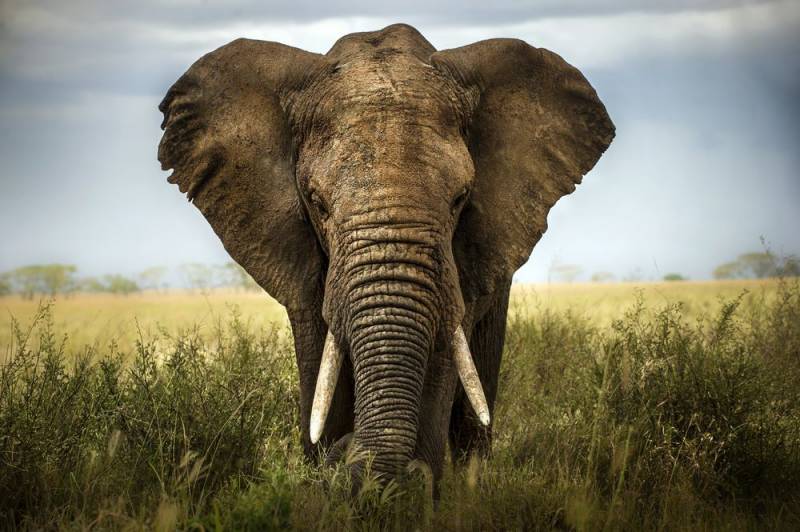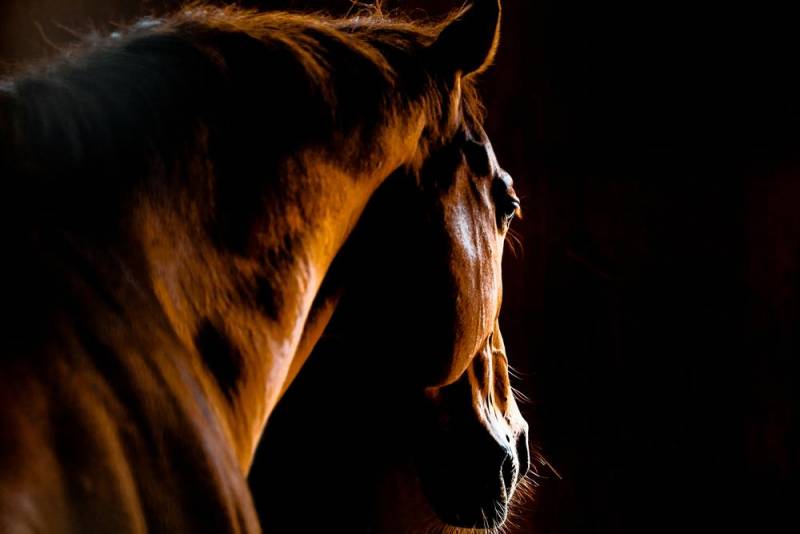In the time of Civil War in Spain in 1936, when the National troops were cornered into the mountainous terrain, it’s nearly impossible for them to get food and supply. Captain Cortes, the leader of National troops has been ordered his troops to retreat and covered in a monastery named Santa Maria de la Cabeza. There are turkeys there and Captain Cortes decided to use these animals as food supply for his troops by dropping the turkeys by parachutes in order to help the cornered troops in the mountainous terrain.
3. Dog
v id="attachment_4909" style="width: 810px" class="wp-caption alignnone">
war animals – Dog
When the Spanish troops invade the South America in the 16th century, they used armed dogs to aid the invasion. The armed dog’s role is important during the mid-century conflict in Europe. At the present time, dogs were still involved at war, especially to detecting planted bombs or landmines using their sharp smelling sense. Dogs have been equipped with vest to guarantee their safety in Iraq and Afghanistan war.
4.4. Elephant
id="attachment_4910" style="width: 810px" class="wp-caption alignnone">
war animals – Elephant
This animal is already menacing with their huge physical appearance. They are also equipped with natural weapons like strong tusks and flexible trunk. In the war field, they can stab the enemies with their tusks, stepping on their enemies and throw the enemies away with their trunk. The ancient kingdom of India has been reported as the first country that using elephants as their warfare rides. Alexander the Great armies were shocked when they are invading the Middle East continent. They were expecting to face horse cavalry armies but they were wrong, they faced not only horse cavalry but also elephant cavalry armies as well.
5.5. Bees
id="attachment_4911" style="width: 810px" class="wp-caption alignnone">
war animals – Bees
The Greeks and Romanian armies have been used bees to block the enemy movement. They breeding the bee inside special barrels and throw it away to the enemies. When the barrels were crushed, the bees are coming out from the barrels toward the enemies and they are covered on a panic situation. The bees’ utilization was still conducted until the World War I and Vietnam. The American scientists also found that bees can also detect the landmines.
6. D6. Dolphin
="attachment_4912" style="width: 810px" class="wp-caption alignnone">
war animals – Dolphin
These sea mammals are already considered as the smartest animal. Dolphin has biological sonar which can help the soldier to detect and located mines based on concept of echo. In the time of Gulf and Iraq war, the dolphin helps to cleaning Umm Qasr harbor from mines planted on the sea.
7. P7. Pigeon
="attachment_4913" style="width: 810px" class="wp-caption alignnone">
war animals – pigeon
This bird has been blessed with a special ability, their navigation system. With this ability, pigeon can return to their nest although it’s located hundred miles away. Therefore, pigeon has been used for communication especially for sending messages during the wartime. The most popular pigeon is Cher Ami, this pigeon has been awarded for delivering 12 messages to fort Verdun in France. In the World War I, the allied armies have been using about 200.000 pigeons for communication. At the present time, the role of pigeon has been substituted by advanced communication technology.
8. Sea8. Seal
attachment_4914" style="width: 810px" class="wp-caption alignnone">
war animals – seal
This mammal can swim up to 40 mph, they can see at minimum light condition and they also can hear below the surfaces and dives for 300 meter. Because of this marvelous abilities, the US Navy train this animal to mark on the mines.
9. Cam9. Camel
attachment_4915" style="width: 810px" class="wp-caption alignnone">
war animals – camel
This dessert creature has special abilities to survive on a dry area. Camel is used for transportation but they also utilized at war. The Persian camel army has been armed for facing the opponent; camels are also having special odor which can scare the opponent horses. The role of this animal has been substituted since the invention of gun.
10. Ba10. Bat
attachment_4916" style="width: 810px" class="wp-caption alignnone">
war animals – bat
In the beginning of World War II, the Japanese has been successfully destroyed Pearl Harbor, an American naval base located in Hawaii. The American army has a plan involving animals to revenge the raid of Pearl Harbor. On their military plan, the American armies have planted some kind of bomb on bat. The American army felt that this plant will succeed but unfortunately, the bats are proved to be uncooperative and they flee for their own way. The plan is failed to used and the American army switch their plan into more devastating result, they made it to destroy two main cities of Japan at that time, Hiroshima and Nagasaki using an atomic bomb.
11. Mo11. Monkey
attachment_4917" style="width: 810px" class="wp-caption alignnone">
war animals – monkey
A rebellious group of Taliban in Afghanistan has been training monkeys to carry and use AK-47, grenade launcher, and mortar launcher in the border between Afghanistan and Pakistan. The monkeys get bananas and nuts in return of their service.
12. Ra12. Rat
attachment_4918" style="width: 810px" class="wp-caption alignnone">
war animals – rat
After a decade of war, a country in the east coast of Africa called Mozambique has been turned into landmines field and they are still active. A social worker named Bart Weetjens suggest to use rat as landmines sniffer. Local rats have been used for the purpose, they have bigger body and they will scratch the dirt indicating that the mine has been planted in the place where they scratch the dirt. And then, the bomb squad will carefully dig and remove the mine trigger. Bart’s social organization aiming for clean up the 3,7 million m2 from mines in 2014, after that they will move to Angola and Kongo to do the same thing.












Leave a Reply